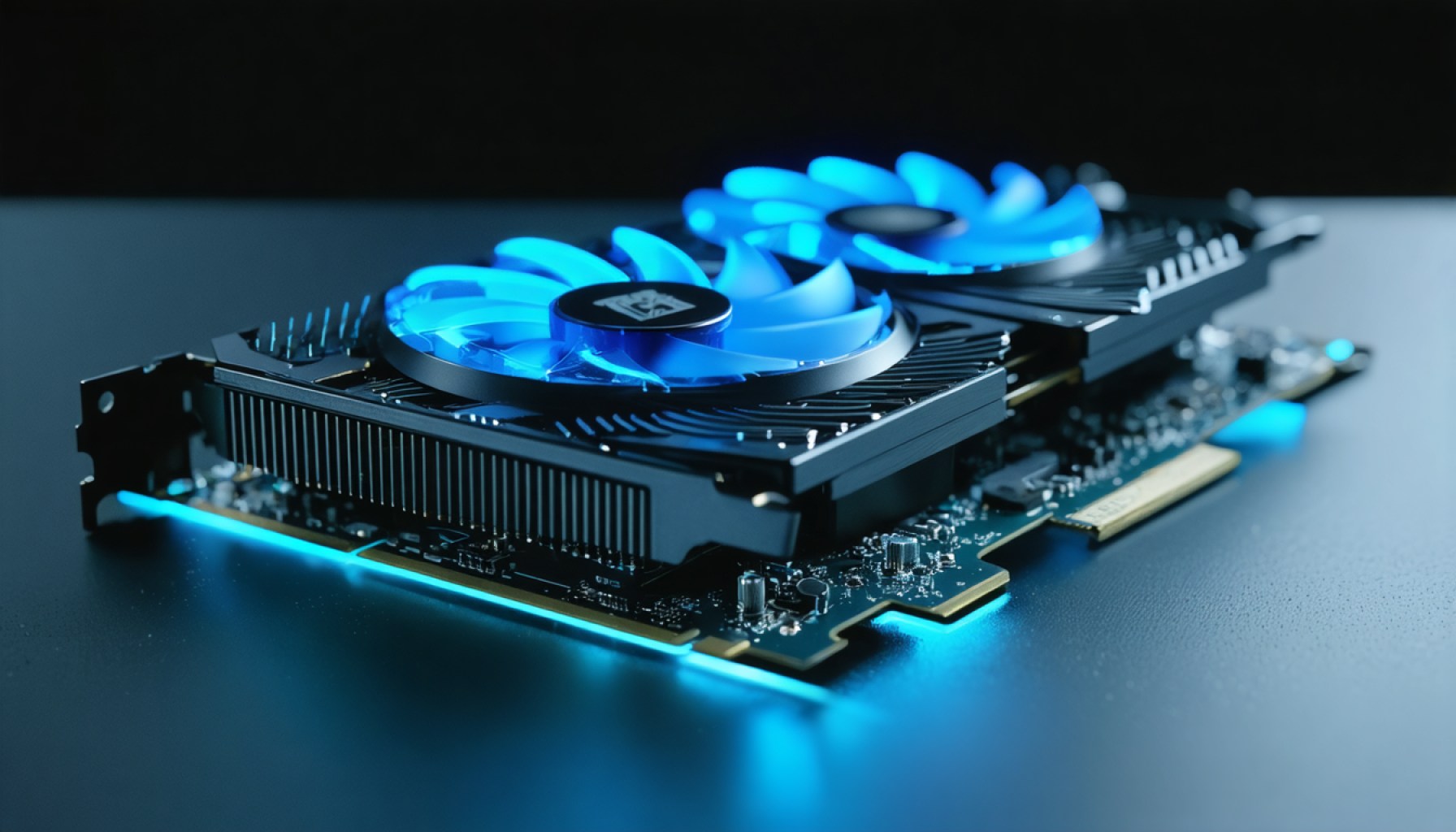- Nvidia’s dominance in the AI accelerator market was solidified by its role in powering AI applications like ChatGPT, leading to significant revenue growth.
- The company faces challenges from rivals like DeepSeek, geopolitical trade policies, and clients potentially developing their own AI chips.
- Super Micro Computer’s platform decision delays highlight fragility in Nvidia’s growth, with AI products comprising the majority of its revenue.
- Despite a projected reduced growth rate of 65% by early 2026, the long-term demand for AI suggests continued profitability for Nvidia.
- With an 85% market share in advanced AI chips and a promising future in AI demand, Nvidia remains a leader in innovation.
- While investors should anticipate moderated growth, Nvidia’s strategic position in a booming AI sector suggests enduring potential for substantial returns.
In a world where silicon dominates and innovation is the new currency, Nvidia stands as a colossus. Its meteoric rise in 2023 and 2024, fueled by the AI revolution, particularly its pivotal role in powering applications like ChatGPT, solidified its position as an undisputed titan in the AI accelerator market. The high-performance chips that catapulted the company to glory now account for a lion’s share of its revenue.
Yet, the tech world is never static. Recent tremors have shaken Nvidia’s supremacy. A groundbreaking development by a rival known as DeepSeek has introduced cost-effective AI solutions, while geopolitical headwinds threaten global operations due to restrictive trade policies. Add to this the whispers of some major clients, tinkering with the idea of developing their own AI chips, and an eerie shadow seems to loom over Nvidia’s sunny forecasts.
Take Super Micro Computer, a significant Nvidia customer, now reeling from delayed platform decisions. As Supermicro stalls, Nvidia’s short-term growth becomes increasingly precarious, especially when AI accelerator products dominate $115 billion of its $130 billion revenue stream. Although the company celebrated a 114% revenue surge in the fiscal year, projections for a reduced growth rate of 65% in early 2026 tell a sobering tale. Investors eye a once-lofty price-to-earnings ratio warily, pondering if the stock still holds the allure it once did.
Yet, shifting perspectives reveal a broader narrative. The hunger for AI persists, unquenched and insatiable. Industry forecasts predict a vibrant future, estimating a 29% compound annual growth rate (CAGR) for AI chips through 2030. As Nvidia holds a commanding 85% market share in advanced AI chips, it remains a stalwart amid a swelling tide of demand. Competitors may marvel at Nvidia’s innovative prowess, but matching its technological advances, such as the upcoming Rubin chip, proves formidable.
It’s true, Nvidia’s days of triple-digit growth may dwindle, and the excitable crescendo of its financial gains will likely soften. But, even as growth tempers, its fundamental earning power seems poised to swell. With a forward P/E ratio shrinking to 24, Nvidia appears to maintain momentum toward profitability, dampening fears surrounding its near-term prospects.
Ultimately, while prudent investors should brace for a moderating growth phase, divesting Nvidia now overlooks its prolonged potential. The tech giant remains not on the brink of decline but at the forefront of a lucrative AI boom, its resilience poised to deliver substantial returns in the years to come. The landscape may evolve, but the party for Nvidia isn’t over—at least, not yet.
The Battle for AI Supremacy: Can Nvidia Stay on Top?
Nvidia, a leader in the AI accelerator market, has experienced an incredible surge in growth due to the artificial intelligence boom. However, the tech giant now faces significant challenges that may redefine its dominance. Here’s a deeper look into the factors influencing Nvidia’s future, its position in the market, and what lies ahead.
How Nvidia Became an AI Titan
Nvidia’s ascension to the summit of AI technology can largely be attributed to its development of high-performance graphics processing units (GPUs) that are indispensable in AI applications. This technology powers advanced AI models, including those used by OpenAI’s ChatGPT, contributing significantly to its revenue.
Emerging Challenges and Competitors
1. Competitive Landscape: DeepSeek’s foray into cost-effective AI solutions signifies a disruption in the market. While Nvidia holds an impressive 85% market share, DeepSeek poses a viable threat by offering affordable alternatives.
2. Geopolitical Pressures: Nvidia’s operations are increasingly susceptible to restrictive trade policies, which could hamper its global reach and supply chain.
3. Client Developments: Major Nvidia customers, like Supermicro, are experiencing internal delays, which could slow Nvidia’s revenue progression. Additionally, some clients are exploring developing their own AI chips, potentially further impacting Nvidia’s market dominance.
Industry Trends and Forecasts
The AI market’s compound annual growth rate is projected at 29% through 2030, underscoring a robust demand trajectory. Even if Nvidia’s growth slows, the continuous technological advancements and market needs for AI chips remain strong tailwinds for its long-term success.
Technological Innovations
Nvidia’s upcoming Rubin chip will push the boundaries of what AI hardware can achieve. This innovative endeavor may help Nvidia maintain its competitive edge even as new players enter the market.
Prospects and Market Considerations
– Investment Outlook: While there is cautious optimism regarding Nvidia’s immediate growth, the company’s stable forward P/E ratio of 24 suggests a continued path toward long-term profitability.
– Strategic Positioning: Given its market share and ongoing innovation, Nvidia is well-positioned to capitalize on burgeoning AI applications despite temporary growth moderation.
Actionable Recommendations for Investors
1. Monitor Competitor Developments: Keep a close eye on competitors like DeepSeek, as their advancements could significantly influence the market dynamics.
2. Assess Geopolitical Impacts: Stay informed about international trade policies affecting tech giants to anticipate potential disruptions in Nvidia’s global strategy.
3. Evaluate Client Strategies: Understand how major client decisions, such as the development of proprietary AI chips, might impact Nvidia’s revenue streams.
4. Consider Long-Term Potential: Nvidia’s inherent strengths and pivotal role in the AI sector suggest enduring growth. Investors may benefit from holding or strategically increasing their positions, based on risk appetite and market developments.
For more information on Nvidia’s latest innovations and insights, visit their official Nvidia website.
Despite current tensions and hurdles, Nvidia’s technological prowess and market position make it a formidable player in the ongoing AI evolution. The company’s continued adaptation and innovation in response to emerging challenges underline its resilience and promise in the AI landscape.









